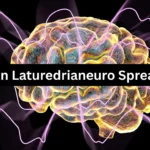What is Laturedrianeuro?
Laturedrianeuro is a term used within the medical and scientific communities to describe a phenomenon that has garnered increasing attention due to its unique characteristics and implications for health and safety. This term encompasses a variety of clinical manifestations and biological processes that are associated with certain neurochemical interactions. Understanding laturedrianeuro is essential, as it aids in recognizing the underlying mechanisms that contribute to its effects and the broader implications for neurological health.
Originating from various studies in neurobiology, laturedrianeuro is classified as a neurochemical phenomenon impacting the central nervous system and peripheral reactions. Researchers have identified it predominantly in specific environmental contexts, leading to debates on its origins and classification. Its significance lies not only in its immediate effects on individuals but also in the potential long-term implications for public health. By examining laturedrianeuro closely, scientists seek to uncover strategies to mitigate its adverse effects and promote healthier neurochemical processes.
One of the compelling aspects of laturedrianeuro is its interaction with stressors, both external and internal, that can precipitate an array of symptoms. These symptoms range from mild neurological disturbances to more severe developmental concerns. The ability of laturedrianeuro to manifest in various ways makes it a subject of interest for ongoing research initiatives. Understanding how laturedrianeuro behaves in different circumstances is vital for developing treatment protocols and preventive measures that could curtail its spread.
In conclusion, laturedrianeuro represents a complex interplay of neurochemical factors that illuminate the need for thorough research and public awareness. The consequences of its implications can extend well beyond individual case studies, touching upon community health and safety. As we enhance our understanding of laturedrianeuro, we pave the way for improved therapeutic strategies and informed public policies.
Mechanisms of Spread

The spread of laturedrianeuro is influenced by a variety of interconnected biological, environmental, and social mechanisms. Understanding these pathways is crucial for determining both the feasibility of its spread and the implications it holds for ecosystems and human health. One significant biological factor is the role of vectors, which may include animals or insects that facilitate the transmission of laturedrianeuro through their movement or behavior. These vectors can inadvertently carry the organism from one location to another, contributing to its geographical dissemination.
Environmental factors play a vital role as well. Conditions such as temperature, humidity, and the presence of specific habitats can either promote or hinder the proliferation of laturedrianeuro. For instance, changes in climate can create new niches, allowing for the establishment of laturedrianeuro in previously uninhabitable areas. Additionally, urbanization and land use changes can disrupt natural ecosystems, fostering environments that favor the organism’s growth and spread. Sociocultural aspects, such as human behavior and movement, further complicate this picture. For example, the migration of individuals—whether for work, leisure, or survival—can inadvertently introduce laturedrianeuro into new regions.
To illustrate these mechanisms, one can consider various case studies that have documented instances of laturedrianeuro spread. Research findings have indicated patterns in its transmission, revealing how specific environmental conditions coupled with human activities have enabled the organism to thrive in diverse settings. Analyzing these instances provides insight into the overall narrative of laturedrianeuro’s dynamics, allowing scientists and policymakers to devise strategies for monitoring and controlling its spread. Ultimately, a holistic understanding of these mechanisms is crucial for effective management and potential mitigation efforts regarding laturedrianeuro.
Impacts and Implications of Spread
The potential spread of laturedrianeuro carries significant implications for health, the environment, and society. Understanding these impacts is crucial for developing effective strategies to address the challenges posed by this phenomenon. On one hand, the spread of laturedrianeuro could introduce health complications, particularly if it involves pathogens that affect human, animal, or plant populations. For instance, if laturedrianeuro harbors any vectors that pose risks to public health, communities may see a rise in disease outbreaks, necessitating a robust public health response. This situation underscores the importance of monitoring and surveillance systems that can detect early signs of spread and mitigate potential health crises.
Conversely, there are potential benefits to exploring how laturedrianeuro spreads and its ecological role. In certain contexts, laturedrianeuro may balance ecosystem functions, contributing to biodiversity or enhancing the resilience of certain habitats. These positive outcomes can create opportunities for novel research avenues, ecological studies, or conservation efforts that align with the understanding of laturedrianeuro’s ecological niche. Communities that can harness these benefits may find a path towards adapting to and integrating laturedrianeuro into their local ecosystems thoughtfully.
The societal implications of laturedrianeuro’s spread are multifaceted, influencing economic, cultural, and environmental dimensions. Stakeholders ranging from government bodies to local communities must prepare for potential impacts—both positive and negative. Active engagement with diverse groups can help identify risks and knowledge gaps, paving the way for collaborative efforts in resource management and public education. Overall, the ability to respond effectively to the spread of laturedrianeuro relies on an adaptable strategy that considers all dimensions of its impact on health and society, ensuring resilience in the face of change.
Conclusion and Future Directions
The exploration of whether laturedrianeuro can spread has unveiled a complex landscape that requires ongoing attention and inquiry. Throughout our discussion, we noted that while initial observations raise questions about the propagation of laturedrianeuro, there remains a significant gap in comprehensive research. Different factors, including environmental influences and biological interactions, influence how it may or may not transmit. This understanding is vital, as it not only informs current perspectives but also sets the stage for what could be an evolving narrative regarding laturedrianeuro and its potential implications.
Future research should focus on establishing more definitive pathways of laturedrianeuro’s behavior and interaction mechanisms. This may involve multidisciplinary approaches, integrating biological, ecological, and sociological frameworks to better encapsulate the complexities of its existence. Early detection and intervention will be critical in our efforts to monitor any developments associated with laturedrianeuro spread, should they arise. Moreover, reference to cutting-edge technologies and methodologies in research will bolster our understanding these phenomena.
Furthermore, it is crucial for the scientific community and public health officials to remain alert and responsive to the potential challenges that laturedrianeuro may pose. Enhanced communication among researchers and practitioners can facilitate a proactive rather than reactive stance. Encouraging public awareness initiatives around laturedrianeuro‘s potential risks can also play a key role in fostering informed communities. The need for continual study cannot be overstated, as it is only through persistent inquiry and collaboration that we can gain a clearer insight into whether laturedrianeuro can spread and how we might respond effectively. The future remains uncertain, and vigilance is essential as we seek to unravel this ongoing mystery.







